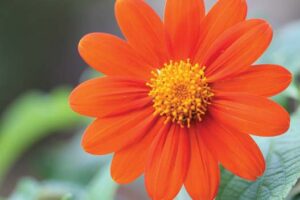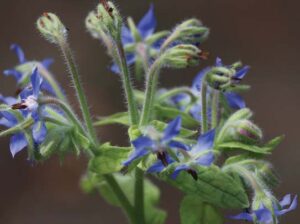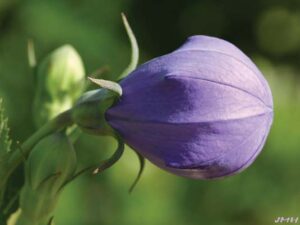School may be out for summer but learning never stops especially when gardening at home. Parents and children can collaborate to create a summer sensory garden. Most sensory gardens focus on the five external senses—visual (sight), olfactory (smell), tactile (touch), auditory (hearing), and gustatory (taste)—in design and plant selection.
The following plants are suggested starters for engaging the five external senses of children through gardening:
•The bright colors of bee balm, blanket flower, cornflower, cosmos, marigolds, nasturtium, petunia, portulaca, salvia, strawflowers, sunflower, tithonia, and zinnia attract the eye. Host primrose parties in the garden to watch the buds on evening primrose ‘Tina James’ open at dusk. Observe the flower that tells the time at 4 p.m., the four o’clock (Mirabilis jalapa).
•The scent of basil, dill, lemon balm, oregano, peppermint, rosemary, and thyme become a seasoning kitchen garden. Agastache, chocolate cosmos, dianthus, flowering tobacco, scented geranium, moonflower, passionflower, sweet alyssum, and the shrubs gardenia and mock orange provide a perfumery.
•Plants with furry or fuzzy foliage like borage, celosia, Lamb’s ears, sage, yarrow, and the spring catkin’s of pussy willow tempt kids to touch. The North American native little leaf sensitive briar, Mimosa microphylla, in the pea family, responds to touch by folding its leaves. Bunny tail (Lagurus ovatue) is an ornamental grass known for its soft, fluffy flower heads resembling bunny tails. The feathery plumes of pink muhly grass are a favorite among gardeners seeking beauty and low maintenance.
•Did you know you could grow a plant orchestra? Many seedpods become percussive as they dry. Gourds provide seed pods that are used as maracas. The seed heads of the money plant (Lunaria annua) are rounded translucent discs that flutter and vibrate in the wind. Lovein a-mist (Nigella) seedpods carry black seeds. As the pods dry, they rattle to release the seed from splits that open on each seed head. The balloon flower (Platycodon grandiflorus) can be made to “pop” open. The flower buds swell up before opening, resembling tiny white or blue balloons. When you squeeze the sides of each bud, they burst open with a popping sound. The seed pods of the Queen series of Cleome, spider plant, explode when dry. The rustle of leaves of clumping bamboo and native ornamental grasses create soothing music in the natural soundscape of the garden.
•Alice Waters, founder of the Edible Schoolyard Project, advocates for children growing, preparing, and tasting healthy fresh garden produce. She observed, “If kids grow it and cook it, they all eat it.”
A summer edible garden in South Carolina could include tomato ‘yellow pear’ or cherry tomato ‘Sweet 100,’ slicing cucumber ‘Burpless,’ okra ‘Clemson spineless,’ and ‘Burgundy,’ patty pan squash ‘Peter Pan,’ pepper ‘Pizza My Heart,’ bean ‘Pretzel,’ bush beans ‘Royal Burgundy,’ popcorn ‘Strawberry,’ potato ‘All Blue,’ and watermelon ‘Moon and Stars.’ Add Southern Highbush blueberry or Rabbit Eye blueberry bushes for snacking, toppings, and baking.
Visit Clemson’s Home and Garden Information Center for additional information on summer garden edibles at hgic.clemson.edu.









Loading Comments